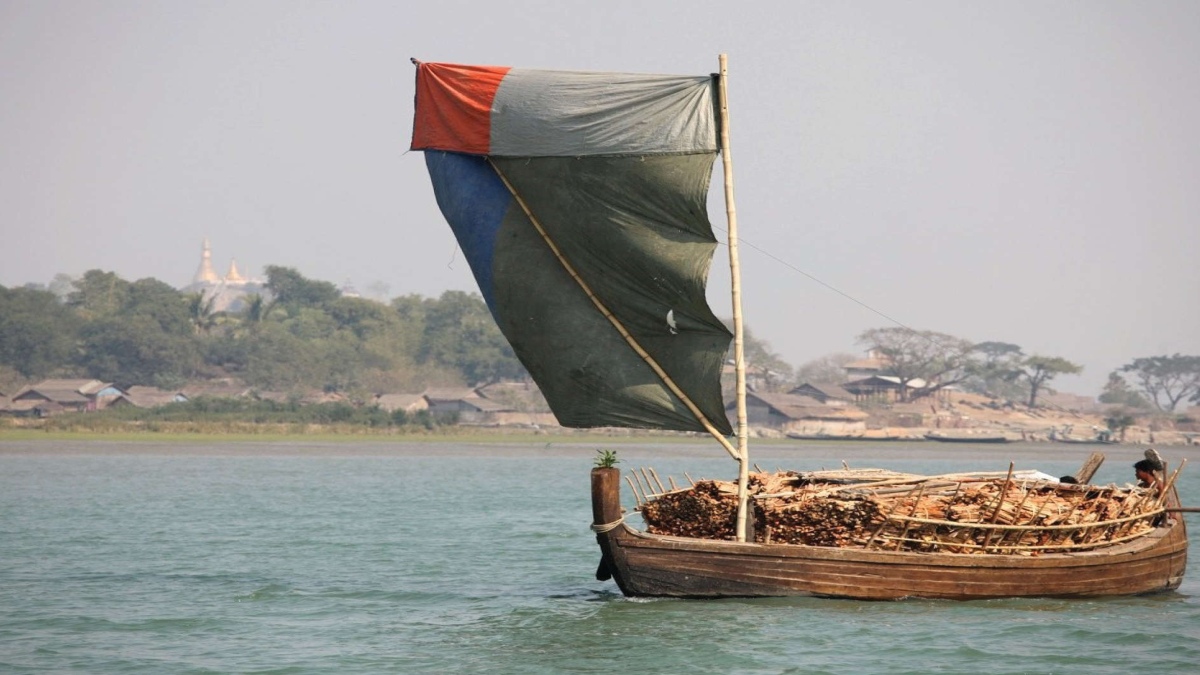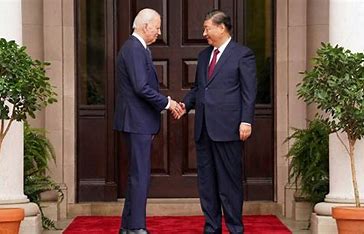
India’s Northeastern region abounds with natural resources accounting for nearly half of the country’s total biodiversity. The region holds one-fifth of India’s hydrocarbon reserves and is affluent in hydropower reserves.
 Pictorial representation of the Kaladan Multimodal Transit Transport Corridor.
Pictorial representation of the Kaladan Multimodal Transit Transport Corridor. A file photo of the Kaladan river.
A file photo of the Kaladan river.
Kaladan multi-modal transit transport corridor as an integral component of India’s Act East policy is being prioritised by Prime Minister Narendra Modi to reinforce development through cross-country economic corridors. The current political dispensation has called for a robust and result oriented diplomacy to attain India’s national interest in South-East and East Asia while creating space for free trade architecture. In the backdrop of this, the timely execution of the Kaladan project would flourish cross-border trade, investment, and growth in India’s Northeast.
WHY KALADAN CORRIDOR?
India’s Northeastern region abounds with natural resources accounting for nearly half of the country’s total biodiversity. The region holds one-fifth of India’s hydrocarbon reserves and is affluent in hydropower reserves. The partition of India in 1947 delinked North-East India’s land and sea connectivity with East Bengal, limiting the region’s geographical connectivity with mainland India only through the 27 sq km narrow Siliguri corridor, called Chicken’s Neck. So, the Kaladan corridor provides an alternative passage to the Northeastern states to enter the blue waters of the Bay of Bengal.
The corridor— named after the river Kaladan originates in the Chin state of Myanmar— passes through the southern districts of Mizoram before falling into the Bay of Bengal. The Ministry of External Affairs of India acting as the nodal agency of the Kaladan Multi-Modal Transit Transport Project (KMTT) signed the Framework of Agreement with the Myanmar Government in 2008 to implement this ambitious project. This transport project links Kolkata port with Sittwe Port in Myanmar (539 km) on the sea; Sittwe to Paletwa by inland water transport (158 km) on river Kaladan; Paletwa to India-Myanmar border in Myanmar by road (110 km); and further to Lawngtlai (Mizoram) in India (100 km) by road. At present, the project is intended towards an integrated port and Inland water transport (IWT) terminal at Sittwe, a smooth navigational channel from Sittwe to Paletwa, and a highway transshipment terminal at Paletwa. The much-awaited US $484 million project is on the final stage of its completion, except 110 km of construction work in Myanmar that’s halted due to the inhospitable terrain and the threats posed by the militant group, Arakan Army.
THE CHINA FACTOR
The project intended to connect India’s Northeastern states with the domestic ports through the Kaladan multi-modal transit transport by avoiding the narrow Siliguri corridor. But in my opinion, after the inauguration of the India-Bangladesh Friendship Bridge, the bridge linking Sabroom (Tripura) and Ramgarh (Bangladesh ) over Feni river for Chittagong Port connectivity, now the Kaladan corridor, could be used for ASEAN economic integration under the broader framework of India-Myanmar Economic Corridor (IMEC). China under the rubric of BRI is constructing 1700 km China-Myanmar Economic Corridor (CMEC) to connect Kunming in the Yunnan province of South West China with Mandalay in Central Myanmar, Yangon in the South, and Kyaukphyu in the Rakhine state of South West Myanmar through a network of techno-economic and energy modes. Moreover, it also assists China to spread its economic and strategic outreach in the Bay of Bengal, further expanding its foothold in South Asia, West Asia, Africa, and Europe through Maritime Silk Road( MSR) bypassing the busiest coke point of Strait of Malacca in the Indo-Pacific region. Many civil society groups are opposing the Chinese presence in Myanmar realising very well how the Belt and Road Initiative ( BRI) linked Afro-Asian countries like Mongolia, Kyrgyzstan, Tajikistan, Maldives, Sri Lanka, Pakistan, Laos, Djibouti, Angola, and Nigeria, etc. fell to the debt trap diplomacy of Beijing.
It is also alleged that China abetted the insurgent groups in Myanmar supplying weapons to the Arakan Army (AA), Kachin Independence Army (KIA), Myanmar National Democratic Alliance Army (MNDAA), Ta’ang National Liberation Army (TNLA), and United WA State Army (UWSA), much to the quagmire of Naypyitaw’s political dispensation. With the overthrow of a democratically elected government led by Aung San Suu Kyi and the assumption of power by the Tamadaw-Armed forces of Myanmar, China is again back to the centre stage of Myanmar to mold its development trajectory. What is more, Beijing has blocked a UN Security Council statement condemning the military coup in Myanmar which corroborated the Chinese backing of the military junta in Naypyitaw. As we know, Myanmar is strategically situated at the crossroads of South and East Asia, it could be a viable partner to promote India’s regional/sub-regional cooperation efforts within the Association of Southeast Asian Nations (ASEAN), Bay of Bengal Initiative for Multi-Sectoral Technical and Economic Cooperation (BIMSTEC) and Mekong-Ganga Cooperation (MGC). Hence, the doctrine of ‘enlightened national interest’ pursued by the Modi Government towards regional /sub-regional issues could be doubly activated to induce deeper engagement with Myanmar to secure our national interest in India’s immediate/extended neighbourhood checkmating China’s brinkmanship in the region.
LINK TO REGIONAL, SUB-REGIONAL COOPERATION
The multi-modal transit transport corridor would link India’s Northeastern states to the Sittwe port in Myanmar paving the way for greater connectivity with the ASEAN, BIMSTEC, and MGC as well. The transportation of goods from India’s Northeast covering approximately Guwahati-Sittwe(1201.7 km ), Itanagar–Sittwe ( 1284.9 km), Kohima-Sittwe(1150.6 km) and Imphal-Sittwe(1011.3 km ), Shillong–Sittwe(982.8km), Aizawl-Sittwe(611 km), and Agartala-Sittwe(955.5 km) would reduce travel time and carrying cost compared to the movement of goods through the Siliguri corridor to the Kolkata port, then to the Sittwe in Myanmar. The direct transshipment of goods from Sittwe to Laem Chabanag (Thailand), Sihanoukville (Cambodia), Port of Klang (Malaysia), Port of Singapore (Singapore), Port of Tanjung Priok (Indonesia), Hai Phong (Vietnam), etc. would fetch trade boom in future. Moreover, in the initial stages, resource-rich organic items like bamboo shoots, tea, cardamom, ginger, kiwi fruit, orange, petroleum products of the Northeastern region could be the major export items for the consumption-driven economies of Thailand, Malaysia, Singapore, and Japan among others. Later, pharmaceutical, ayurvedic, herbal products, soft drinks, and beverages could be added to the export basket. Cross-border collaborative projects could be initiated and growth triangles be formed based on comparative strengths of continuous regions capitalising on their natural resources, technology, finance, and human resources for successful industrial ventures.
No doubt, Kaladan multimodal transport corridor, if completed, as per the revised deadline of 2023, would transform the geo-economic scenario of the region as well as end its maritime isolation. This project would create opportunities for the emergence of industrial clusters in the Northeast, provided the political leadership of the region sets the agenda with a robust entrepreneurial culture and brings institutional reforms to generate growth and development. Then, only India’s Northeast would be ready to kick-start its trade and economic cooperation with the ASEAN and other regional groupings. Besides this, the Kaladan corridor would also raise the importance of the Northeast from the perspective of Act East policy and transform it from a landlocked to sea-linked region in near future.
The writer is an Associate Professor at the Centre for West Asian Studies, School of International studies, Jawaharlal Nehru University. The views expressed are personal.















